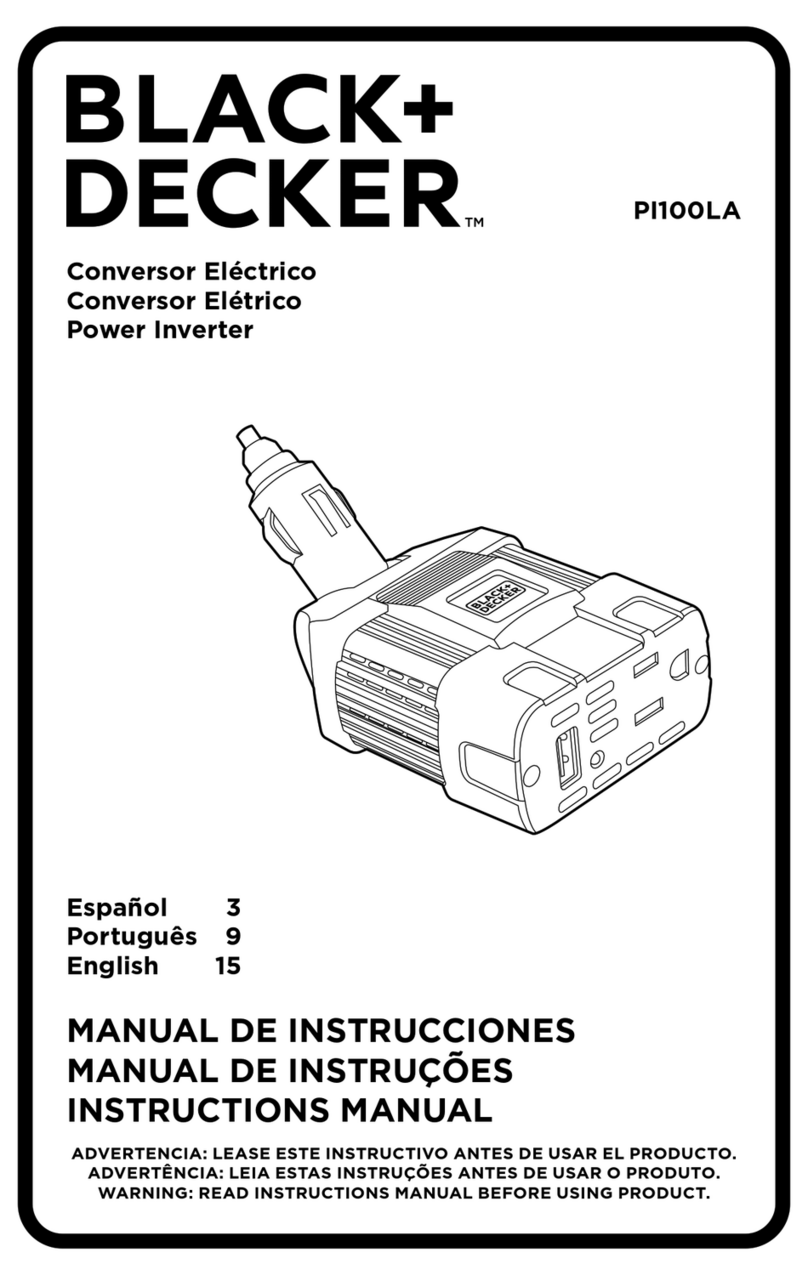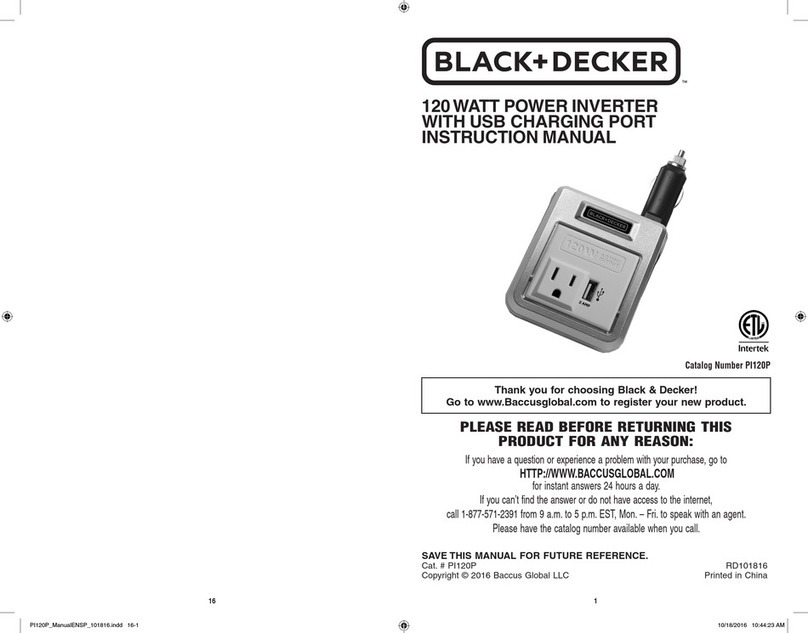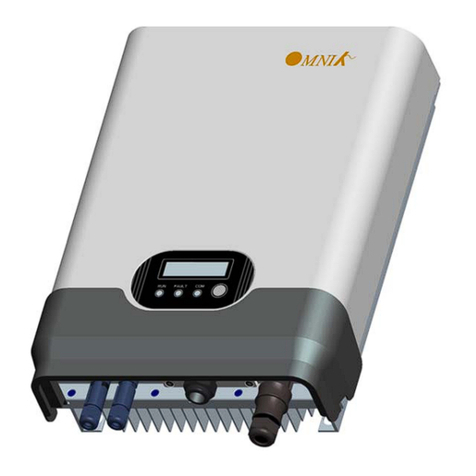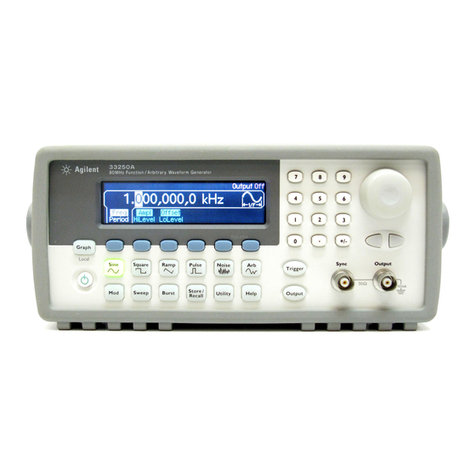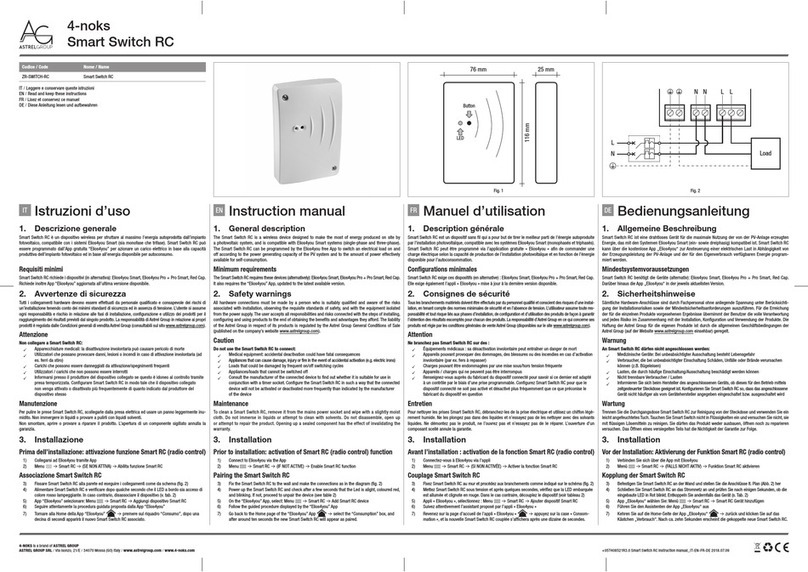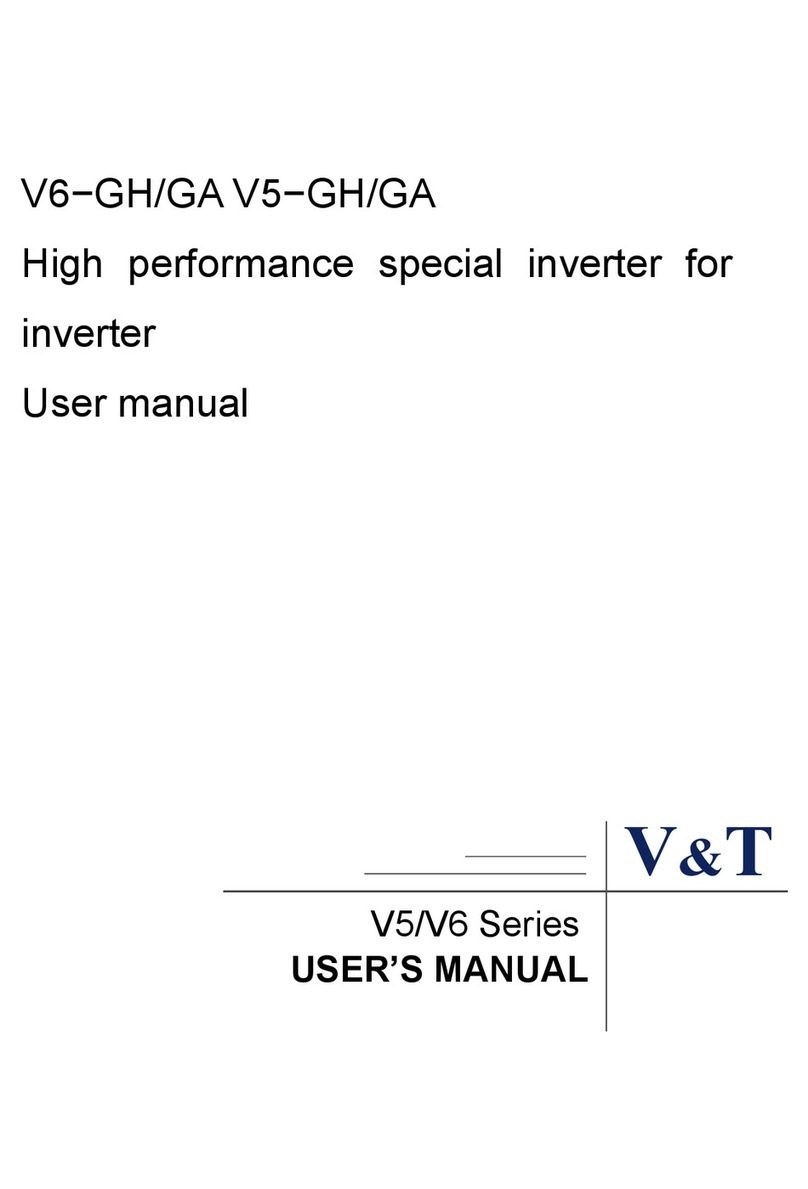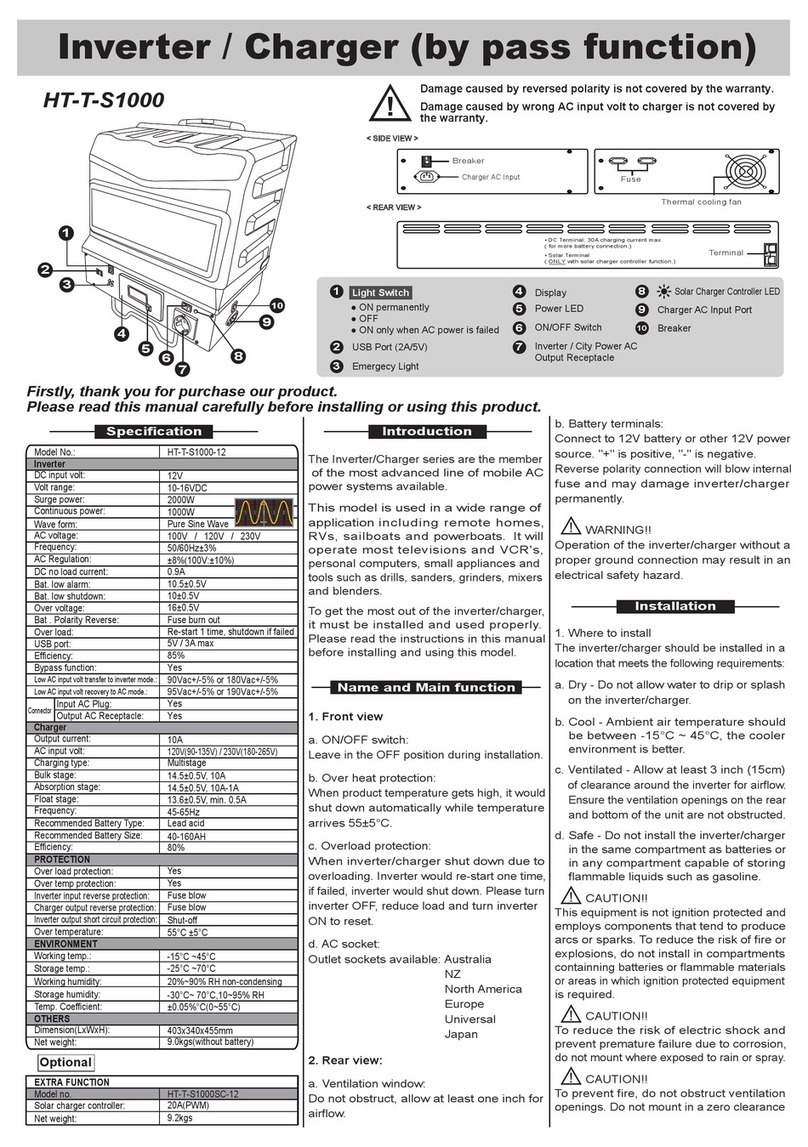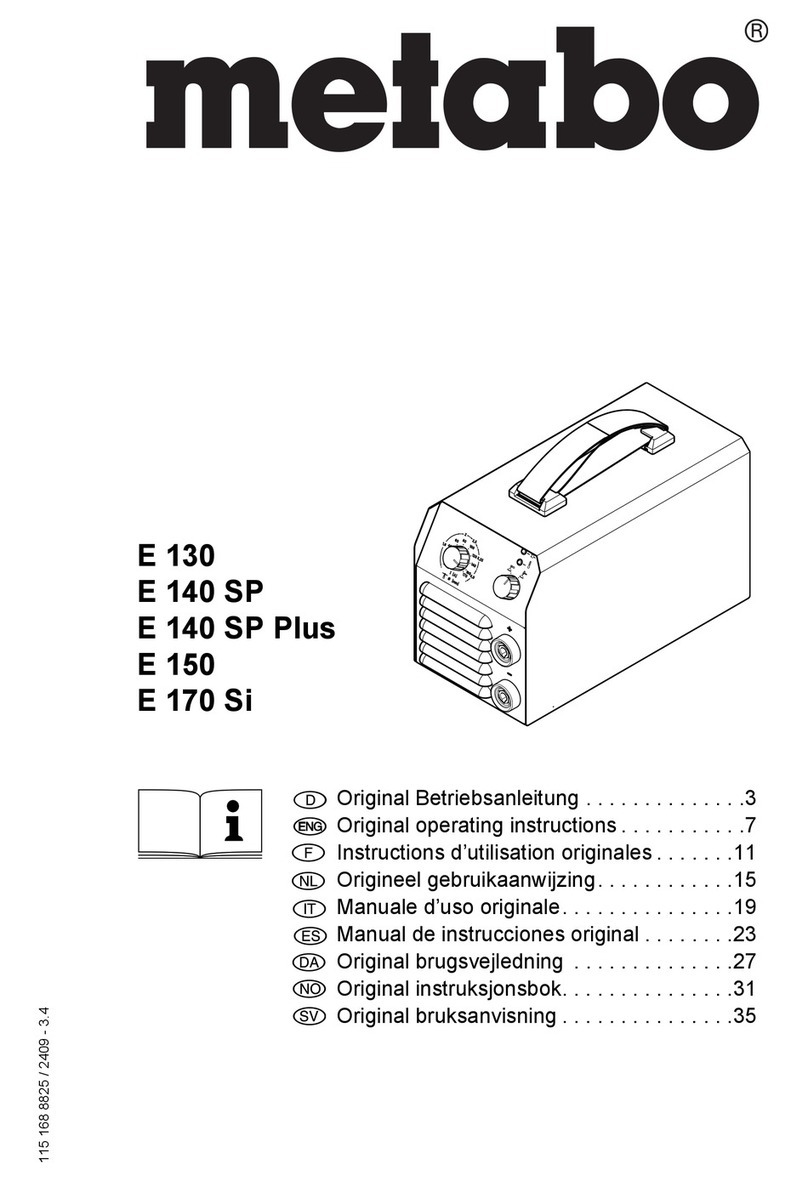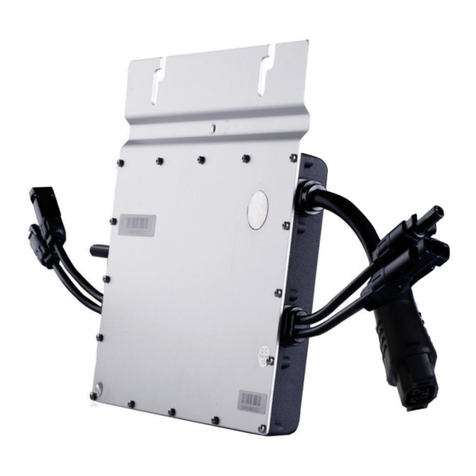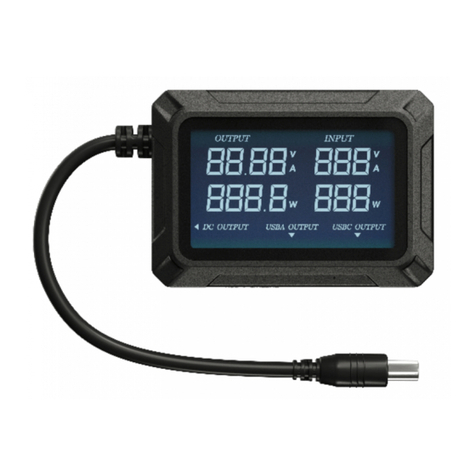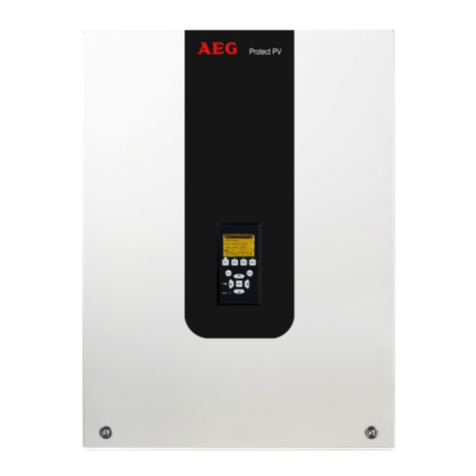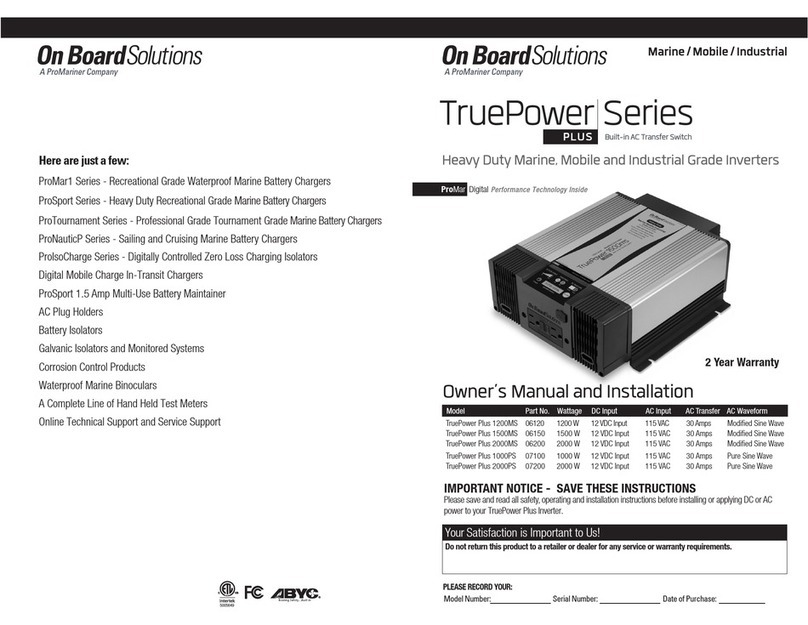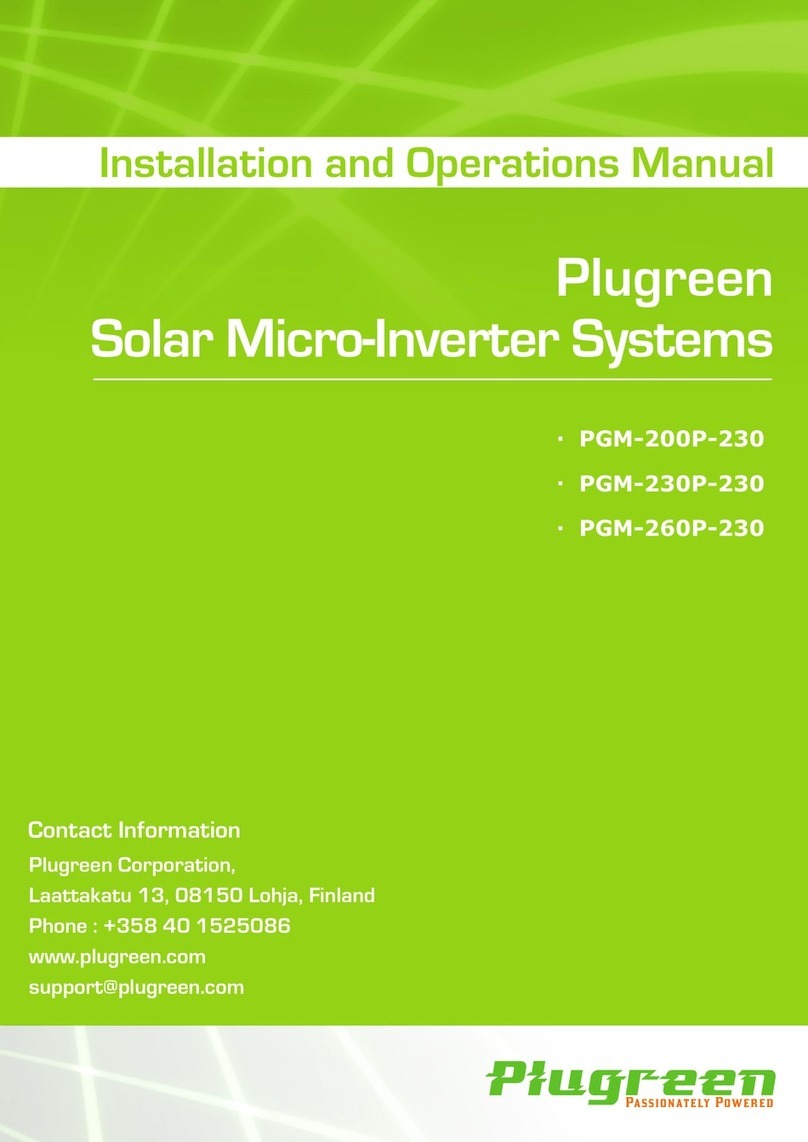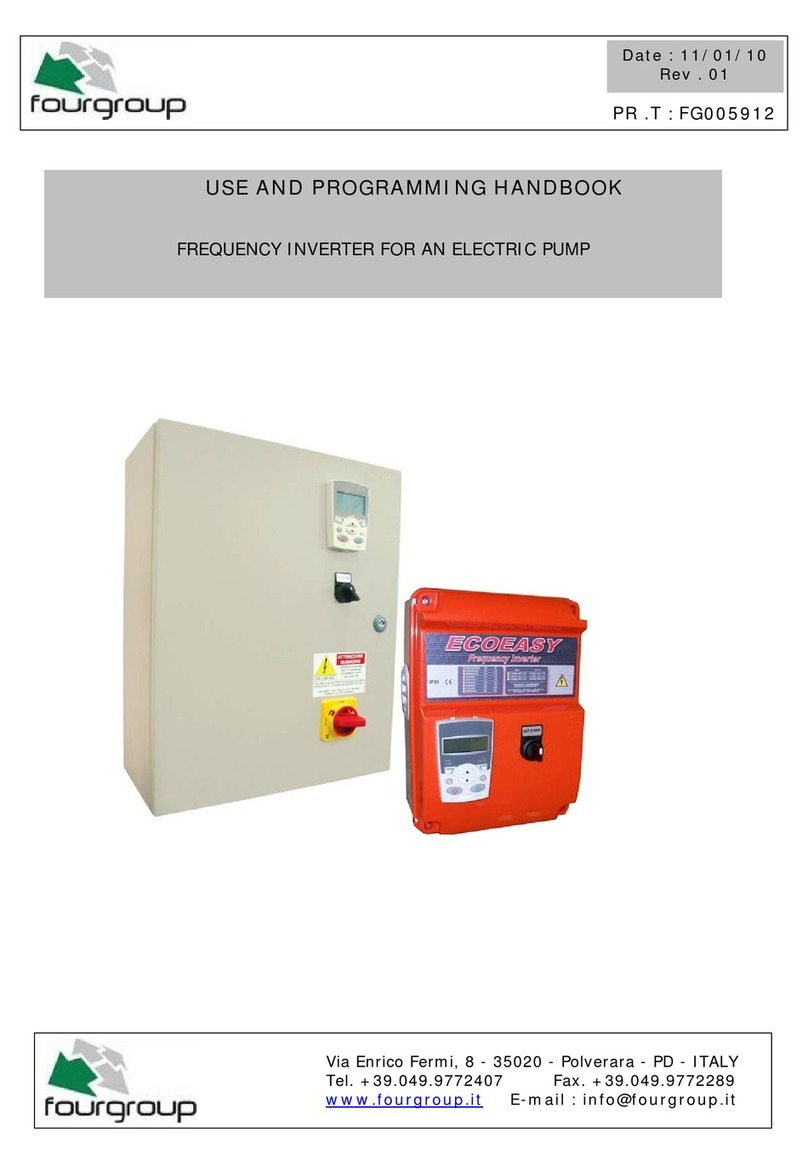BLACK DECKER PI500P User manual

12424
500 WATT POWER INVERTER
WITH USB CHARGING PORT
INSTRUCTION MANUAL
Catalog Number PI500P
SAVE THIS MANUAL FOR FUTURE REFERENCE.
Cat. # PI500P July 2015
Copyright © 2015 Baccus Global LLC Printed in China
Thank you for choosing Black & Decker!
Go to www.Baccusglobal.com to register your new product.
PLEASE READ BEFORE RETURNING THIS
PRODUCT FOR ANY REASON:
If you have a question or experience a problem with your purchase, go to
HTTP://WWW.BACCUSGLOBAL.COM
for instant answers 24 hours a day.
If you can’t find the answer or do not have access to the internet,
call 1-877-571-2391 from 9 a.m. to 5 p.m. EST, Mon. – Fri. to speak with an agent.
Please have the catalog number available when you call.
PI500P_ManualENSP_073015.indd 24-1 7/30/2015 5:44:19 PM

2 3
Minimuam Gauge for Cord Sets
Volts Total Length of Cord in Feet (Meters)
120V 0-25 26-50 51-100 101-150
(0-7.6m) (7.6-15.2m) (15.2-30.4m) (30.4-45.7m)
240V 0-50 51-100 101-200 201-300
(0-15.2m) (15.2-30.4m) (30.4-60.9m) (60.9-91.4m)
Ampere Rating
More Not more American Wire Gauge
Than Than
0 - 6 18 16 16 14
6 - 10 18 16 14 12
10 - 12 16 16 14 12
12 - 16 14 12 Not Recommended
WARNING:
This product or its power cord contains lead, a chemical known to the State of California to
cause cancer and birth defect or other reproductive harm. Wash hands after handling.
WARNING: TO REDUCE THE RISK OF ELECTRIC SHOCK:
• Do not connect to AC distribution wiring.
• Do not make any electrical connections or disconnections in areas designated as IGNITION
PROTECTED
.
This includes DC cigarette lighter type plug connection or airplane adapter. This unit is NOT
approved for ignition protected areas.
•
NEVER
immerse the unit in water or any other liquid, or use when wet.
• Do not insert foreign objects into the inverter’s AC outlets or USB charging port.
WARNING: TO REDUCE THE RISK OF FIRE:
• Do not operate near flammable materials, fumes or gases.
• DO NOT expose to extreme heat or flames.
CAUTION: TO REDUCE THE RISK OF INJURY OR PROPERTY DAMAGE:
• Remove appliance plug from outlet before working on the appliance.
• DO NOT attempt to connect or set up the unit or its components while operating your vehicle. Not paying
attention to the road may result in a serious accident.
• Always use the inverter where there is adequate ventilation. Do not block ventilation slots.
• ALWAYS turn the inverter OFF by disconnecting it from the DC source when not in use.
• Make sure the nominal powering voltage is 12 volts DC, center connection positive (+).
• When using this unit in a vehicle, check the vehicle owner’s manual for maximum power rating and
recommended output. Do not install in engine compartment — install in a well ventilated area.
• Do not use with positive ground electrical systems.* Reverse polarity connection will result in a blown fuse
and may cause permanent damage to the inverter and will void warranty.
*The majority of modern automobiles, RVs and trucks are negative ground.
• Keep in mind that this inverter will not operate high wattage appliances or equipment that produces heat, such
as coffee makers, hair dryers, microwave ovens and toasters.
• Do not open the inverter — there are no user-serviceable parts inside.
• Do not use this inverter with medical devices. It is not tested for medical applications.
• Keep away from children.This is not a toy!
• Install and operate unit only as described in this Instruction Manual.
• Do not use this inverter on a watercraft. It is not qualified for marine applications.
• Check unit periodically for wear and tear. Do not disassemble the unit; return it to the manufacturer when
service or repair is required. Opening the unit may result in a risk of electric shock or fire, and will void
warranty.
•
Read And Understand This Instruction Manual Before Using This Unit.
SAVE THESE INSTRUCTIONS
WARNING: TO REDUCE THE RISK OF INJURY OR PROPERTY DAMAGE:
Follow these instructions and
those published by battery manufacturer and the manufacturer of any equipment you intend to use with this
unit. Review cautionary markings on these products and on engine.
SAFETY GUIDELINES / DEFINITIONS
DANGER:
Indicates an imminently hazardous situation which, if not avoided, will result in death or serious
injury.
WARNING:
Indicates a potentially hazardous situation which, if not avoided, could result in death or serious
injury.
CAUTION:
Indicates a potentially hazardous situation which, if not avoided, may result in minor or moderate
injury.
CAUTION:
Used without the safety alert symbol indicates potentially hazardous situation which, if not avoided, may result
in property damage.
RISK OF UNSAFE OPERATION.
When using tools or equipment, basic safety precautions should always be
followed to reduce the risk of personal injury. Improper operation, maintenance or modification of tools or
equipment could result in serious injury and property damage. There are certain applications for which tools
and equipment are designed. Black & Decker strongly recommends that this product NOT be modified and/or
used for any application other than for which it was designed. Read and understand all warnings and operating
instructions before using any tool or equipment.
IMPORTANT SAFETY INSTRUCTIONS
WARNING:
This product or its power cord contains lead, a chemical known to the State of California to cause
cancer and birth defect or other reproductive harm. Wash hands after handling.
GENERAL SAFETY WARNINGS AND INSTRUCTIONS FOR ALL POWER
INVERTERS
READ ALL INSTRUCTIONS
WARNING:
Read all instructions before operating product. Failure to follow all instructions listed below may
result in electric shock, fire and/or serious injury.
•
Avoid dangerous environments.
Don’t use appliances in damp or wet locations. Don’t use appliances in the
rain.
•
Store idle appliances indoors.
When not in use, appliances should be stored indoors in dry, and high or
locked-up place – out of reach of children.
•
Don’t force appliance.
It will do the job better and with less likelihood of a risk of injury at the rate for which
it was designed.
•
Use right appliance.
Do not use the appliance for any job except that for which it is intended.
•
Disconnect appliances.
Disconnect the appliance from the power supply when not in use,
before servicing, and when changing accessories such as blades and the like.
•
Proper cooling is essential when operating the inverter.
Do not place the unit near the vehicle’s heat vent
or in direct sunlight.
•
Use of accessories and attachments.
The use of any accessory or attachment not recommended for use
with this appliance could be hazardous. Note: refer to the accessory section of this manual for further details.
•
Check damaged parts.
A part that is damaged should be properly repaired or replaced by manufacturer.
•
Outdoor use extension cords.
When an appliance plugged into this unit is used outdoors, use only extension
cords intended for use outdoors and so marked. NOTE THAT THIS INVERTER IS NOT INTENDED TO BE USED
OUTDOORS.
•
Extension cords.
Make sure your extension cord is in good condition. When using an extension cord, be sure
to use one heavy enough to carry the current your product will draw. An undersized cord will cause a drop
in line voltage resulting in loss of power and overheating. The following table shows the correct size to use
depending on cord length and nameplate ampere rating. If in doubt, use the next heavier gauge. The smaller
the gauge number, the heavier the cord.
PI500P_ManualENSP_073015.indd 2-3 7/30/2015 5:44:19 PM

4 5
12V DC VEHICLE ADAPTER
PLUG WITH DC DOUBLE-
BARREL CONNECTOR
BATTERY CLIPS WITH CABLES AND
SLIDE-IN CONNECTORS
HANGING HOOK
HOW THIS INVERTER WORKS
This inverter is an electronic device that converts low voltage DC (direct current) electricity from a battery to 120
volts AC (alternating current) household power. It converts power in two stages. The first stage is a DC-to-DC
conversion process that raises the low voltage DC at the inverter input to 145 volts DC. The second stage is a
MOSFET bridge stage that converts the high voltage DC into 120 volts, 60 Hz AC.
Power Inverter Output Waveform
The AC output waveform of this inverter is known as a modified sine wave. It is a stepped waveform that has
characteristics similar to the sine wave shape of utility power. This type of waveform is suitable for most AC
loads, including linear and switching power supplies used in electronic equipment, transformers, and small
motors.
CAUTION – Rechargeable Devices
• Certain rechargeable devices are designed to be charged by plugging them directly into an AC receptacle.
These devices may damage the inverter or the charging circuit.
• When using a rechargeable device, monitor its temperature for the initial ten minutes of use to determine if it
produces excessive heat.
• If excessive heat is produced, this indicates the device should not be used with this inverter.
• This problem does not occur with most battery-operated equipment. Most of these devices use a separate
charger or transformer that is plugged into an AC receptacle.
• The inverter is capable of running most chargers and transformers.
CAUTION: incompatible products:
Certain products contain power supplies or circuits that are not compatible
with a inverter using a modified sine wave output (such as this inverter) and may be damaged by using this
inverter.
If your product requires pure sine wave AC input power to function properly, the instruction manual for your
product could state this. If in doubt, you should contact your product manufacturer PRIOR TO USE.
Some products must be powered from a pure sine wave power source, such as standard household power, or a
“pure sine wave” inverter in order to function properly.
Your product could be damaged by this inverter if it contains:
• Microwave ovens;
• Transformerless battery chargers
• Capacitive coupled power supplies
If an incompatible product is used with this inverter:
• The product might not operate at all, with no indication of failure. The product fuse might open as a result of
trying to use it with the inverter.
• The product might exhibit unusual operation (such as, intermittent operation, buzzing, and the like.)
Note:
Some laptop computers may not operate with this inverter.
WARNING: If the product does not operate normally, to reduce the risk of injury or property
damage, turn the product off immediately and unplug it from the inverter.
INTRODUCTION
Congratulations on purchasing your new
Black & Decker 500 Watt Power Inverter
.
Read this Instruction
Manual and follow the instructions carefully before using your new inverter.
This power inverter is configured to supply continuous power in the form of two 120 volt AC outlets and a 5
volt USB charging port to run most household or electronic appliances.
Controls and Functions
PIVOTING THREE-
PRONG 120 VOLT
AC OUTLETS
VENTILATION SLOTS
500W LED
INDICATOR
USB CHARGING
PORT
100W LED
INDICATOR
TRANSLUCENT ON/OFF BUTTON AND
POWER/FAULT INDICATOR
MOUNTING BRACKETS
(TOTAL OF 4, 2 ON THE LEFT,
AND 2 ON THE RIGHT)
(RED) POSITIVE
CABLE POST
(UNDER CAP)
DC PORT (FOR USE WITH
THE 12V DC VEHICLE
ADAPTER
(BLACK) NEGATIVE
CABLE POST
(UNDER CAP)
HIGH-SPEED
COOLING FAN
(RED) POSITIVE POST
GROOVE (BLACK) NEGATIVE
POST GROOVE
PI500P_ManualENSP_073015.indd 4-5 7/30/2015 5:44:20 PM

6 7
Connection to Power Source
The Power Inverter comes equipped with a DC Accessory Outlet Plug and Battery Clips for connection to a
power source.
CONNECTING TO A POWER SOURCE USING THE DC ACCESSORY OUTLET PLUG (UP TO 100W ONLY)
The DC Accessory Outlet Plug is suitable for operating the inverter at power outputs up to 100 watts and has
overload protection at 100W to prevent you blowing the fuse if you connect a higher rated appliance. The tip of
the plug is positive (+) and the side contact is negative (–).
The opposite end of the DC Accessory Outlet Plug has a unique connector fitted to it which will allow it to be
only fitted into the socket on the rear of the unit when there are NO battery clips connected to the unit. This is a
safety feature and the design of the plug also covers the positive (+) terminal to
prevent both leads being connected at the same time.
• Connect the inverter to the power source by inserting the DC Accessory Outlet Plug firmly into the accessory
outlet of a vehicle or other DC power source. Make sure there is adequate space for proper ventilation of the
inverter.
• Press the translucent on/off button.
• The 100W LED Indicator will light, indicating that the inverter is operating properly and is ready to power
appliances that draw up to 100 watts continuous.
Notes:
If the power/fault LED flashes red, the unit emits three beeps every five seconds, the 100W LED indicator does not light and the AC
and USB outlets shut down, a fault condition has occurred. Refer to the “Troubleshooting” section of this manual.
If the inverter does not work when using the vehicle accessory outlet, make sure the ignition/accessory switch is actually powering the
accessory outlet. Some vehicles require the ignition switch to be turned on.
Ensure that the wattage of all equipment simultaneously plugged into the inverter does not exceed 100 watts continuous
Most vehicle accessory outlet circuits have fuses rated at 15 to 20 amps or greater. To operate at full wattage, either use the battery
clip cable (supplied) or directly wire to the power source with user-supplied wire and fuse.
CAUTIONS
• Connect directly to power source using the included Battery Clips when operating above 100 watts.
• Do not use with positive ground electrical systems.
• Reverse polarity connection will result in a blown fuse and may cause permanent damage to the inverter.
CONNECTING TO A POWER SOURCE USING THE PROVIDED BATTERY CLIPS WITH SLIDE-IN
CONNECTORS
Use the provided Battery Clips (with cables and slide-in connectors) to connect the Power Inverter directly to
the 12 volt power source as follows:
1. Check to make sure the power/fault LED inside the On/Off button is not lit and that no flammable fumes are
present in the installation area.
2. Turn the red plastic cap (counterclockwise) on the inverter’s positive (+) cable post and remove. Attach the
positive connector at the end of the red battery clip cable into the groove of the positive (+) cable post.
Replace the cap and turn clockwise to secure. Do not over-tighten.
3. Connect the red battery clip to the POSITIVE terminal of the battery.
4. Turn the black plastic cap (counterclockwise) on the inverter’s negative (–) cable post and remove. Attach
the negative connector at the end of the black battery clip cable into the groove of the negative (–) cable
post. Replace the cap and turn clockwise to secure. Do not over-tighten.
5. Connect the black battery clip to the NEGATIVE terminal of the battery.
6. Make sure that all connections between cables and terminals are secure.
7. Press the translucent on/off button.
8. The 100W and 500W LED Indicators will light, indicating that the inverter is operating properly and is ready
to power appliances that draw up to 500 watts continuous.
Note:
If the power/fault LED flashes red, the unit emits three beeps every five seconds, the 100W and 500W LED Indicators do not light and
the AC and USB outlets shut down, a fault condition has occurred. Refer to the “Troubleshooting” section of this manual.
DIRECT HARDWIRING TO POWER SOURCE (OPTIONAL CONNECTION METHOD; HARDWARE NOT
INCLUDED)
Use #10 AWG wire if the inverter to power source connection is 10 feet or less. For cable lengths up to 10ft
use #8 AWG wire. In either case, protect the positive (+) wire from shorts by installing a 50 amp fuse or circuit
breaker close to the DC power source (battery) terminal.
1. Check to make sure the power/fault LED inside the translucent On/Off button is not lit and that no flammable
fumes are present in the installation area.
2. Identify the positive (+) and negative (–) DC power source (battery) terminals.
PROTECTIVE FEATURES
The inverter monitors the following conditions:
Low Battery Voltage —
This condition is not harmful to the inverter, but could damage the power source, so
the inverter will automatically shut down when input voltage drops below 10.5 ± 0.5 volts DC.
Input Voltage Too High —
The inverter will automatically shut down when DC input voltage exceeds 16 ± 0.5
volts, as this can harm the unit.
Thermal Shutdown Protection —
The inverter will automatically shut down when the unit becomes overheated.
Overload/Short Circuit Protection —
The inverter will automatically shut down when a short circuit occurs.
OPERATING TIPS
The
inverter
should only be operated in locations that are:
DRY — Do not allow water or other liquids to come into contact with the inverter.
COOL — Surrounding air temperature should ideally be 10-20°C (50-68°F). Keep the inverter away from direct
sunlight, when possible.
WELL-VENTILATED — Keep the area surrounding the inverter clear to ensure free air circulation around the unit.
Do not place items on or over the inverter during operation. The unit will shut down if the internal temperature
gets too hot. The inverter will auto-reset after it cools down.
SAFE — Do not use the inverter near flammable materials or in any locations that may accumulate flammable
fumes or gases. This is an electrical appliance that can briefly spark when electrical connections are made or
broken.
INSTALLATION
Your inverter will provide you with continuous electrical power when powered by a reliable 12 volt DC source,
such as a vehicle battery or a multiple battery configuration. This manual does not describe all of the possible
configurations.
Mounting the Inverter
Tools Required:
four BA4x14 screws in a set and Philips head screwdriver (NOT supplied).
The inverter comes equipped with mounting brackets for long-term installation. The manufacturer recommends
using BA4x14 screws in a set with a standard Philips head screwdriver (none of these are supplied). User may
choose to use different screws appropriate to the mounting surface.
Secure the inverter to a flat surface, observing all cautions regarding installation found in this manual.
CAUTION
To avoid the risk of property damage, only mount the inverter on a level, stable surface, assuring that all
screws are tightened securely and observing all of the cautions and recommendations regarding installation
found in this manual.
Hanging the Inverter
The retractable hanging hook at the bottom of unit allow you to position the inverter for convenient, hands-free
operation.
CAUTION: TO REDUCE THE RISK OF PRODUCT DAMAGE:
• When the hanging hook is not in use, return it to its retracted position.
• When the inverter is hung by the hanging hook, do not shake the unit or the object that it is hanging from. Do
not hang the inverter from any electrical wires, or anything that it is not secure.
• Only use the hanging hook for hanging the inverter. The hanging hook is not intended to support additional
weight. Do not hang anything additional to the inverter or risk of breakage may occur.
OPERATING INSTRUCTIONS
The Power Inverter must be connected only to batteries with a nominal output voltage of 12 volts. The unit will
not operate from a 6 volt battery and will sustain permanent damage if connected to a 24 volt battery.
The standard North American 120 volt AC outlets and USB charging port allow simultaneous operation of
multiple devices. Simply plug the equipment into the unit and operate normally. Ensure that the wattage of all
equipment simultaneously plugged into the PI500P does not exceed 500 watts continuous.
CAUTION: TO REDUCE THE RISK OF PROPERTY DAMAGE:
Always connect the PI500P to the 12 volt DC power source before plugging any devices into the unit.
PI500P_ManualENSP_073015.indd 6-7 7/30/2015 5:44:20 PM

8 9
Reading the Power/Fault LED
The power/fault LED is located inside the translucent On/Off Button. Press the On/Off Button once to turn the
unit on. The Power/Fault LED lights or flashes in one of three colors, indicating the following:
Blue:
The inverter is properly connected to a functioning DC power source and is operating at full voltage; the
AC outlets and USB charging port are ready to use.
Orange:
The inverter is properly connected to a functioning DC power source and is operating at partial voltage.
The AC and USB outlets are active; however this indicates the inverter will shut down soon as the power source
voltage is low.
Red (flashing):
A fault condition has occurred. The unit emits three beeps every five seconds, and the AC
and USB outlets are automatically shut down. Refer to the Protective Features Section and the Troubleshooting
Section of this Instruction Manual. Press the On/Off Button to turn the inverter off, correct the fault and then
press the On/Off Button again to turn the inverter back on.
Operation of the 120 Volt AC Outlets
1. Connect the inverter to a functioning 12 volt DC power source as described in this Instruction
Manual. If using the 12 Volt DC Vehicle Accessory Adapter, rotate the vehicle accessory plug slightly to
make sure there is good contact. Make sure there is adequate space for proper ventilation of the inverter.
2. Press the translucent on/off button to turn the unit ON.
3. Depending on the power source, either the 100W LED Indicator or both the 100W and 500W LED
Indicators will light. If these LEDs do not light or if the power/fault LED flashes red, please refer to the
“Troubleshooting” section of this manual.
4. Plug the (110/120 volt AC) appliance into one of the Inverter’s three-prong AC outlet and operate normally.
Notes:
This inverter has two three-prong AC outlets that can be rotated forward and upward to maximum of 90 degrees to adjust the
orientation. Do not attempt to forcibly rotate the AC outlets beyond its maximum angle.
Ensure that the wattage of all equipment simultaneously plugged into the inverter does not exceed 100 watts continuous through the
supplied DC Vehicle Adapter plug, and 500 watts continuous via the supplied Battery Clips with Slide-In Connectors.
The Inverter will not operate appliances and equipment that generate heat, such as hair dryers, electric blankets, microwave ovens and
toasters.
Remember to disconnect the inverter from any power source when not in use.
Operation of the USB Charging Port
1. Connect the inverter to a functioning 12 volt DC power source as described in this Instruction Manual. If
using the 12 Volt DC Vehicle Accessory Adapter, rotate the vehicle accessory plug slightly to make sure
there is good contact. Make sure there is adequate space for proper ventilation of the inverter.
2. Press the translucent on/off button to turn the unit ON.
3. Depending on the power source, either the 100W LED Indicator or both the 100W and 500W LED
Indicators will light. If these LEDs do not light or if the power/fault LED flashes red, please refer to the
“Troubleshooting” section of this manual.
4. Plug the USB-powered device into the inverter’s USB Charging Port and operate normally.
Notes:
This unit’s USB Charging Port does not support data communication. It only provides 5 volts/2A DC power to an external USB-
powered device.
Some USB-powered household electronics may not operate with this USB charging/power port. Check the manual of the
corresponding electronic device to confirm that it can be used with this type of USB charging/power port.
Not all mobile phones are provided with a charging cable, they are normally data cables which are not supported by this device -
please check with your mobile phone manufacturer for the correct charging cable.
Remember to disconnect the inverter from any power source when not in use.
CARE AND MAINTENANCE
Storage
1. Ideal storage temperature range is 0-40°C (32-104°F).
2. Store and use the PI500P in a cool, dry place with adequate ventilation for all-around air circulation.
3. Avoid locations that are exposed to heating units, radiators, direct sunlight, or excessive humidity or
dampness.
3. Install a fuse holder or breaker close to the positive (+) terminal of the DC source (battery).
4. Connect a length of wire on one side of the fuse holder or circuit breaker. Connect the other end of the wire
to the positive (+) terminal of the inverter.
5. Connect a length of wire between the inverter’s negative (–) terminal and the DC power source negative (–)
terminal.
6. Connect a short length of wire to the other terminal of the fuse holder or circuit breaker. Mark it “positive” or
“+”.
7. Connect the free end of the fuse or breaker wire to the positive (+) terminal of the DC power source
(battery).
8. Insert a fuse appropriate to the inverter in the fuse holder.
9. Press the translucent on/off button.
10. The 100W and 500W LED Indicators will light, indicating that the inverter is operating properly and is ready
to power appliances that draw up to 500 watts continuous.
11. Test the inverter by plugging in a 100 watt lamp or equipment.
Note:
If the power/fault LED flashes red, the unit emits three beeps every five seconds, the 100W and 500W LED Indicators do not light and
the AC and USB outlets shut down, a fault condition has occurred. Refer to the “Troubleshooting” section of this manual.
CAUTION
• The cable and fuse sizes given here are a general recommendation. You should always consult your National
Electrical Code prior to beginning each specific installation.
• Loose connectors may cause overheated wires and melted insulation.
• Check to make sure you have not reversed the polarity. Damage due to reversed polarity is not covered by our
warranty.
IMPORTANT CABLE INFORMATION
Substantial power loss and reduced battery operating time results from inverters installed with cables that are
not able to supply full power. Symptoms of low battery power can result from cables that are either excessively
long or an insufficient gauge.
Connection To Load
The Power Inverter is equipped with dual standard North American three-prong type outlets. Plug the cord
from the equipment you wish to operate into the AC receptacle(s). Make sure the combined load requirement
of your equipment does not exceed maximum continuous power.
The Power Inverter is engineered to be connected directly to standard electrical and electronic equipment in the
manner described above. Do not connect the Power Inverter to household or RV AC distribution wiring. Do not
connect the Power Inverter to any AC load circuit in which the neutral conductor is connected to ground (earth)
or to the negative of the DC (battery) source.
WARNING: Do not connect to AC distribution wiring!
Rated Versus Actual Current Draw of Equipment
Most electrical tools, appliances, electronic devices and audio/visual equipment have labels that
indicate the power consumption in amps or watts. Be sure that the power consumption of the item to be
operated is below 500 watts. If the power consumption is rated in amps AC, simply multiply by the AC volts
(120) to determine the wattage.
Resistive loads are the easiest for the inverter to run; however, it will not run larger resistive loads (such as
electric stoves and heaters), which require far more wattage than the inverter can deliver. Inductive loads (such
as TVs and stereos) require more current to operate than do resistive loads of the same wattage rating.
Inductive loads, i.e. power tools
Note: Some motors used in power tools, refrigerators and pumps require a very high surge current to start.
This inverter can handle a surge twice it’s rated power but some motors require more than this when started.
The inverter will not be harmed if you try to start such a product it will simply shutdown on overload.
For safety reasons, the unit will simply shut down if it is overloaded. To restart the unit, simply unplug all
devices plugged into the unit; disconnect the unit from any 12 volt DC power source; then reconnect the unit
BEFORE plugging the appliance back in.
PI500P_ManualENSP_073015.indd 8-9 7/30/2015 5:44:20 PM
Table of contents
Languages:
Other BLACK DECKER Inverter manuals
Popular Inverter manuals by other brands
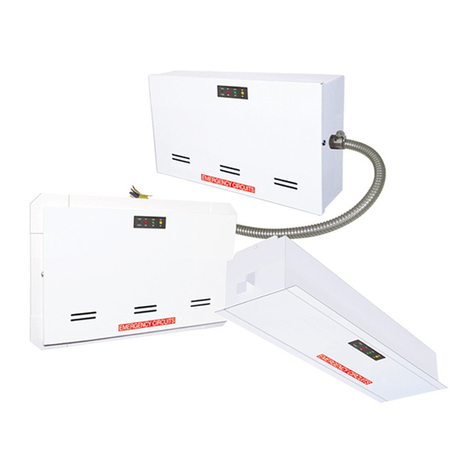
BARRON
BARRON EXITRONIX Tucson Micro Series installation instructions
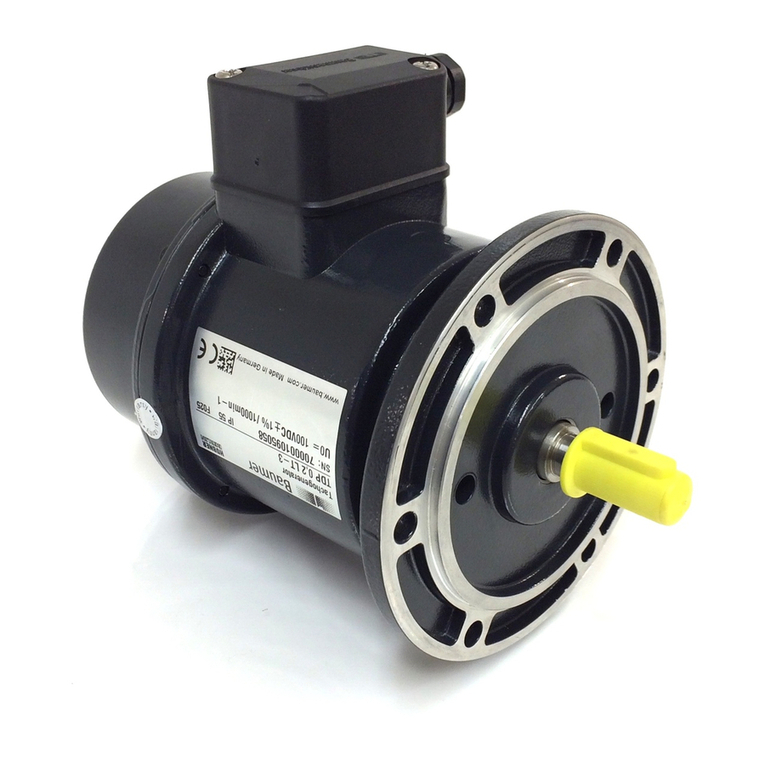
Baumer
Baumer HUBNER TDP 0,2 Series Mounting and operating instructions
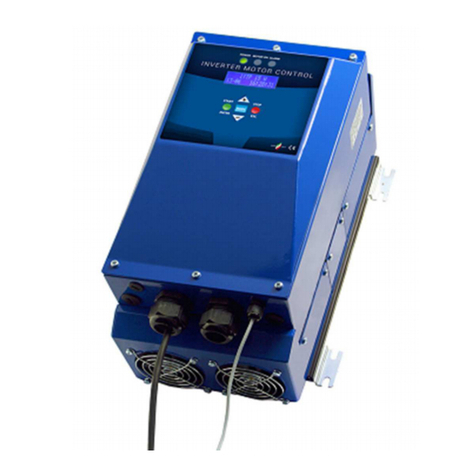
electroil
electroil ITTPD11W-RS-BC Operation and Maintenance Handbook
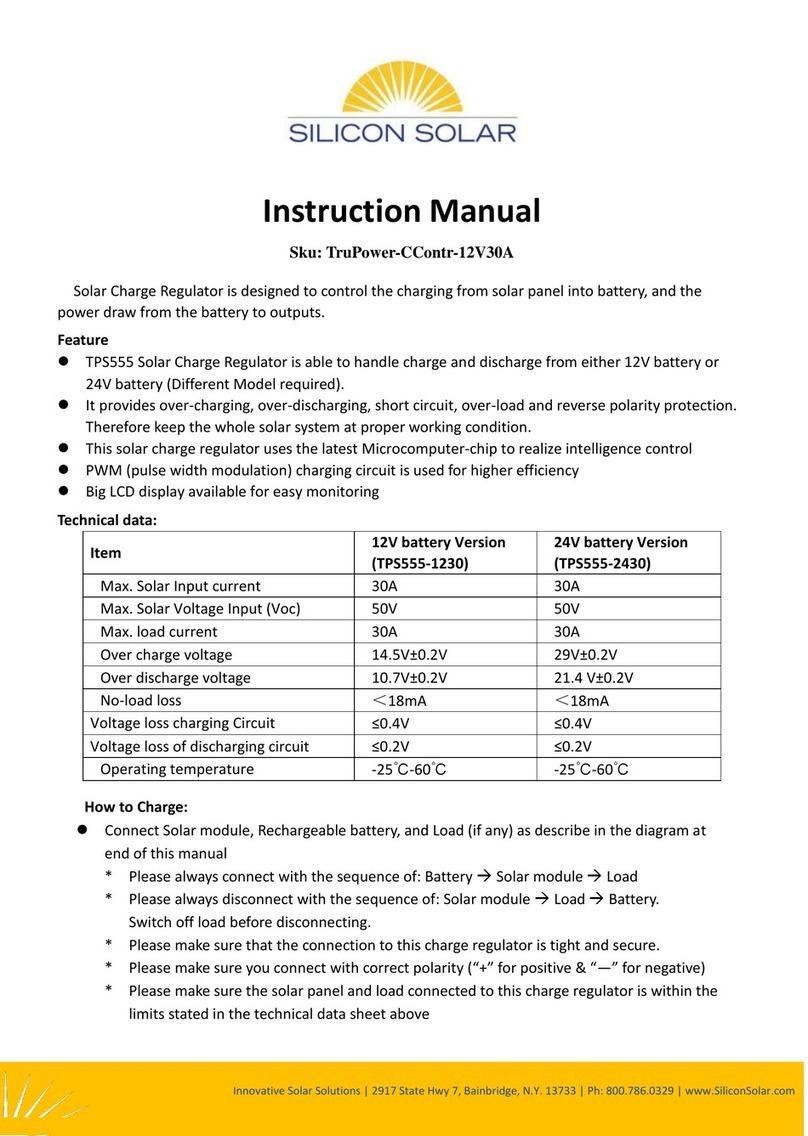
Silicon Solar
Silicon Solar TPS555-1230 instruction manual
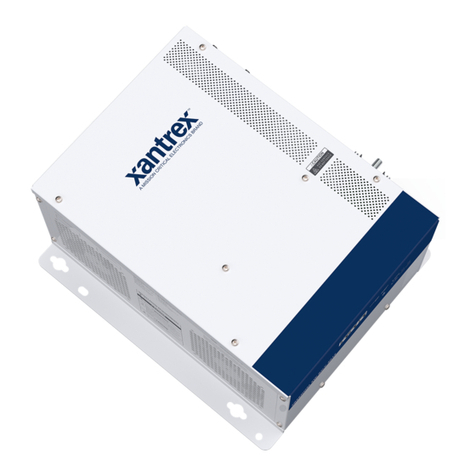
Mission Critical
Mission Critical Xantrex Freedom SW-RVC owner's guide
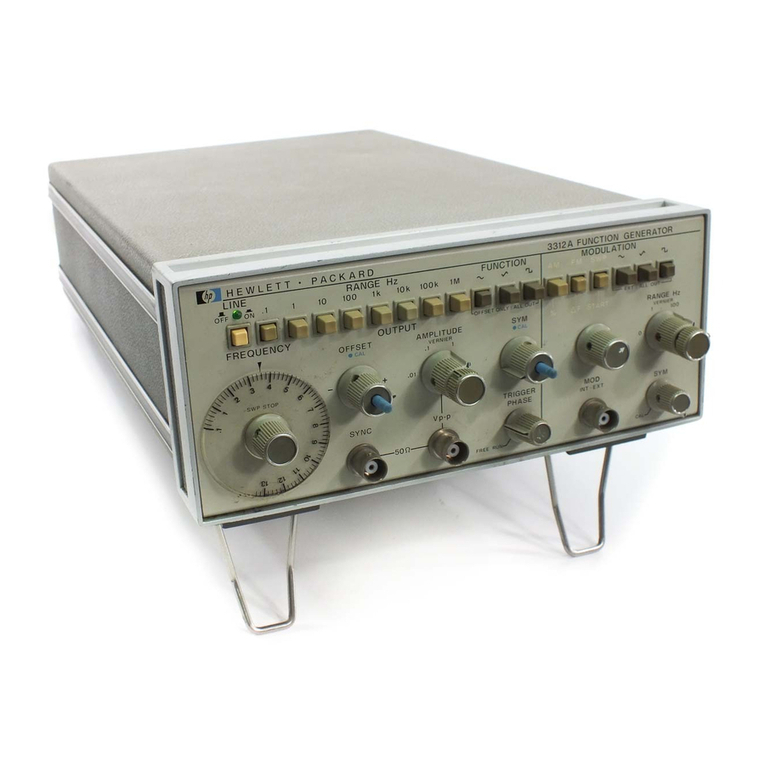
HP
HP 3312A Operating and service manual

